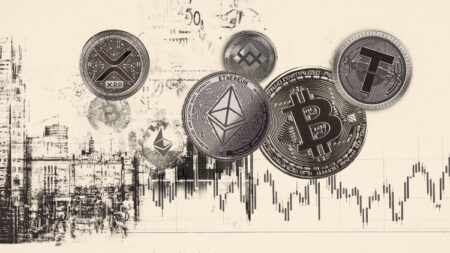- Gold prices remain firm as markets focus on Israel’s attacks on Iran.
- XAU/USD continues to climb, with prices holding firm above $3,400 while US equities and risk assets plunge.
- Michigan consumer sentiment and expectations beat estimates, with inflation expectations falling. But ‘risk-off’ tone remains.
Gold (XAU/USD) is extending its gains as Israel’s attacks on Iran continue, supporting demand for the safe-haven precious metal.
At the time of writing, Gold is trading near $3,430, with a surge in bullish momentum potentially opening the door for a retest of the $3,500 record high in the near term.
The attacks by Israel on Iran’s nuclear facilities have resulted in a broad ‘risk-off’ tone throughout markets, supporting Gold’s rise.
Recent news indicates that the United States and Israel have warned that attacks are likely to persist, leading to a surge in gold prices, which are currently trading at $3,430.
In a televised interview with ABC News, President Donald Trump said, “We warned them and they ignored it. They’ve been hit harder than ever before, and there’s plenty more where that came from.”
In a post on social media, President Trump stated, “I gave Iran chance after chance to make a deal. I told them, in the strongest of words, to ‘just do it,’ but no matter how hard they tried, no matter how close they got, they just couldn’t get it done,”.
Governments around the world, from Riyadh to Beijing, have condemned the strikes. China’s Foreign Ministry spokesman Lin Jian called on all sides “to push for regional peace, stability, and to steer clear of further escalation.”
The airstrikes on Iran have reportedly killed senior IRGC figures like Major General Mohammad Bagheri and IRGC commander Hossein Salami, as well as several nuclear scientists.
With geopolitical tensions on the rise, Gold’s appeal remains strong.
US Michigan Sentiment and inflation expectations fail to lift risk mood
US economic data released Friday showed a notable improvement in consumer sentiment alongside a moderation in inflation expectations, according to the first round of preliminary figures from the University of Michigan (UoM) for June.
The Michigan Consumer Expectations Index surged to 58.4, up from 47.9, while the Consumer Sentiment Index climbed to 60.5, well above expectations of 53.5 and up from 52.2 in May.
Meanwhile, inflation expectations showed signs of easing, with the 1-year outlook falling to 5.1% from 6.6%, and the 5-year outlook edging down to 4.1% from 4.2%. As preliminary data, these figures offer an early snapshot of consumer attitudes and price expectations, which could still be revised.
This data generally supports the argument for the US Federal Reserve (Fed) to cut interest rates due to slowing inflation. However, with oil prices surging following the attacks in Iran, the Fed’s comments at the upcoming Federal Open Market Committee (FOMC) meeting could take a different direction on Wednesday.
However, the escalation in Middle East tensions introduces new uncertainty that could affect global markets, energy prices, and inflation expectations, potentially complicating the Fed’s policy path despite the encouraging economic signals.
The final survey figures are scheduled for release on June 27, providing a more comprehensive picture of consumer sentiment and inflation expectations amid evolving global conditions.
remain
Daily digest market movers: Geopolitics and Middle East conflict remain in focus
- In a post on social media, President Trump stated, “I gave Iran chance after chance to make a deal. I told them, in the strongest of words, to ‘just do it,’ but no matter how hard they tried, no matter how close they got, they just couldn’t get it done,”.
- These comments have raised questions over the involvement of the US in the attacks, which could cause geopolitical risks to intensify between the US and other nations that have condemned the attacks.
- In a post on social media, President Trump stated, “I gave Iran chance after chance to make a deal. I told them, in the strongest of words, to ‘just do it,’ but no matter how hard they tried, no matter how close they got, they just couldn’t get it done,”.
- On Friday, Reuters and Bloomberg reported that Israel had struck multiple facilities in Iran.
- Israeli Prime Minister Netanyahu confirmed the attacks, citing that Israel had “struck at the heart of Iran’s nuclear enrichment program”. Reports from Israel confirmed that roughly 100 targets had been hit using 200 air force planes.
- Several senior officials of Iran have been killed, including Hossein Salami, the head of the Islamic Revolutionary Guard Corps, and the military chief of staff, Mohammed Bagheri
- The escalation in tensions emerged on Thursday after the United Nations’ nuclear watchdog adopted a resolution stating that Iran is violating its obligations under the nuclear non-proliferation agreement. In response, Tehran announced plans to escalate its nuclear activities, asserting that it had “no option but to respond.” Uranium, the core fuel used in nuclear energy, can be weaponized when highly enriched. Iran continues to insist that its nuclear program is intended solely for peaceful purposes.
- Trump confirmed on Wednesday that US personnel are being moved out of parts of the Middle East due to the escalating tensions between Israel and Iran. This occurs ahead of the sixth round of nuclear talks between the US and Iran, scheduled for this weekend, which has since been cancelled.
- On the economic data front, the release of US Producer Price Index (PPI) data on Thursday showed that inflation is slowing on the wholesale level. Headline PPI showed an annual increase of 2.6% in May, in line with analyst forecasts, following a 2.5% increase in April. Core PPI, which excludes volatile goods, fell to 3% in May, down from 3.2% in April.
- PPI data followed the release of the US Consumer Price Index (CPI) on Wednesday, which showed that inflation at the consumer level continued to ease in May.
Technical analysis: Gold prices break $3,400
Gold prices rallied on Friday after reports of the attacks, breaking above the former $3,400 psychological resistance level, which has now turned into support.
The safe-haven appeal of Gold lifted XAU/USD to its second-highest peak this year near $3,444, where the metal is currently trading. The next level of resistance remains at $3,500, the record high that was reached in April.
Meanwhile, support remains firm at $3,400, with a move lower bringing the $3,385 mark into play. The latter is another crucial level that has limited the upside move in Gold prices on several occasions throughout the week.
Meanwhile, the Relative Strength Index (RSI) stands at 60 and points upwards, indicating a bullish bias. On the downside, the $3,350 psychological level, which has provided support throughout the week, remains intact. Below that is $3,291, the 23.6% Fibonacci retracement of the January-April uptrend.
For bearish momentum to gain traction, a breach of this zone may pave the way for the next big psychological level of $3,200.
Gold (XAU/USD) daily chart
US Dollar FAQs
The US Dollar (USD) is the official currency of the United States of America, and the ‘de facto’ currency of a significant number of other countries where it is found in circulation alongside local notes. It is the most heavily traded currency in the world, accounting for over 88% of all global foreign exchange turnover, or an average of $6.6 trillion in transactions per day, according to data from 2022.
Following the second world war, the USD took over from the British Pound as the world’s reserve currency. For most of its history, the US Dollar was backed by Gold, until the Bretton Woods Agreement in 1971 when the Gold Standard went away.
The most important single factor impacting on the value of the US Dollar is monetary policy, which is shaped by the Federal Reserve (Fed). The Fed has two mandates: to achieve price stability (control inflation) and foster full employment. Its primary tool to achieve these two goals is by adjusting interest rates.
When prices are rising too quickly and inflation is above the Fed’s 2% target, the Fed will raise rates, which helps the USD value. When inflation falls below 2% or the Unemployment Rate is too high, the Fed may lower interest rates, which weighs on the Greenback.
In extreme situations, the Federal Reserve can also print more Dollars and enact quantitative easing (QE). QE is the process by which the Fed substantially increases the flow of credit in a stuck financial system.
It is a non-standard policy measure used when credit has dried up because banks will not lend to each other (out of the fear of counterparty default). It is a last resort when simply lowering interest rates is unlikely to achieve the necessary result. It was the Fed’s weapon of choice to combat the credit crunch that occurred during the Great Financial Crisis in 2008. It involves the Fed printing more Dollars and using them to buy US government bonds predominantly from financial institutions. QE usually leads to a weaker US Dollar.
Quantitative tightening (QT) is the reverse process whereby the Federal Reserve stops buying bonds from financial institutions and does not reinvest the principal from the bonds it holds maturing in new purchases. It is usually positive for the US Dollar.
Read the full article here















